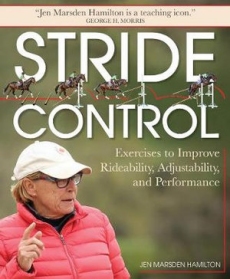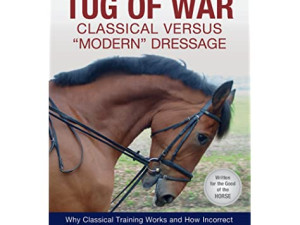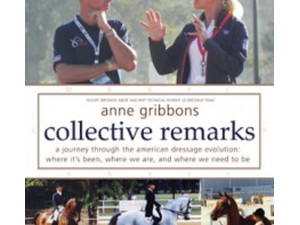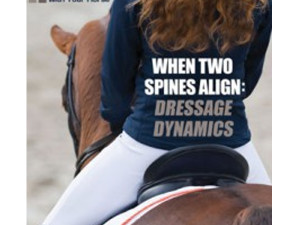Stride Control
Stride Control
$45.00
Stride Control
AUTHOR: JEN MARSDEN HAMILTON
Understanding and implementing stride control (being able to adjust the number of strides before and between fences) improves a horse’s rideability and allows the rider to further improve the horse’s technique over an obstacle. Jen Marsden Hamilton discovered striding from former US Show Jumping Chef d’Equipe George Morris, who credits her as being the first student to whom he taught the method that he’d learned from Bertalan De Némethy, one of his mentors.
Stride control is an essential part of any rider’s development when jumping obstacles, and jumping them well, is a goal. Paperback, 176 pages, illustrated
Out of stock
CompareDescription
Stride Control
Stride control is an essential part of any rider’s development when jumping obstacles, and jumping them well, is a goal. Now, after coaching countless riders and horses around the world in the striding techniques that brought her success during her own impressive competitive career, and Hamilton has compiled her knowledge in a concise book of exercises and insightful strategies.
This fun, approachable guide will help all riders train with correctness and form good habits at home so they can be stars at their next jumping or eventing competition. Exercises include detailed set-up instructions and illustrations for reference; clear discussion of the purpose and strategy for the training session; and helpful tips, to ensure all involved are benefiting from the lesson. Throughout, Hamilton’s straight-talk and wry humour entertain as well as advice, providing an all-around superb guide to a necessary jumping skill.
Related products
Creative Dressage Schooling
Creative Dressage Schooling $39.95Creative Dressage Schooling hardback
This guide provides upbeat patterns/exercises that take the necessary task of essential schooling and add variety and challenge to everyday workouts, beat the dressage practice blues, and get the job done.
Looking for new tools to add to your training arsenal and looking to create a supple, gymnasticized horse will delight in this fun collection of practice routines and photographs.
Tug of War Classical versus Modern Dressage
Tug of War Classical versus Modern Dressage $44.95Tug of War Classical versus Modern Dressage
New paperback edition
By Dr. Gerd Heuschmann. Why Classical Training Works and How Incorrect Modern Riding Negatively Affects Horses Health. Tug of War looks at training from a physiological point.
In this publication he explains the biomechanics of the horse and therefore the biomechanical background of classical riding instruction. He also looks at today’s modern methods used in riding and training in comparison to the basis of classical knowledge. Hardback.
This book Tug of War and his DVD If Horses Could Speak are international bestsellers.
Collective Remarks Anne Gribbons
Collective Remarks Anne Gribbons $39.95Collective Remarks Anne Gribbons Paperback
A journey through the American dressage evolution- where it’s been, where we are and where we need to be.
Almost 20 years Anne provided commentary on the state of dressage in the Unites States and around the world.
Anyone with an interest in dressage, its controversies, and its most famous names, will enjoy Anne’s stories, but the true value is in her ideas for improving our horses, our riders, and our ability to compete on the international scene with success and integrity in the years to come.
When Two Spines Align
When Two Spines Align $69.95When Two Spines Align Dressage Dynamics by Beth Baumert Hardback
Within riding exists a fundamental conflict of interest: The rider needs to have control— confidence depends on ability to control the balance of own body as well as that of a very powerful horse. The horse, by nature, needs to feel free—free in both mind and body to express himself through physical movement.
Readers will discover how to use “positive tension” and what the author calls the four physical “Powerlines”—Vertical, Connecting, Spiraling, and Visual—to become balanced and effective in the saddle. Readers will then find ways to understand and manage the horse’s balance and coordination challenges, including the fact that he is inherently crooked and naturally inclined to do too much with his front end and not enough with his hind.






